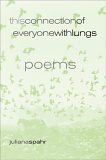Be Cool (2005)

I thought Dwayne "The Rock" Johnson was good in his role as a gay bodyguard, but otherwise I was snoozing through most of this one.


From a golden step,– among silk cords, green velvets, gray gauzes, and crystal discs that turn black as bronze in the sun, I see the digitalis opening on a carpet of silver filigree, of eyes and hair.On the surface, a beautiful homage to flowers and their wonderful, colorful images, but as a metaphor of people and their blind attention to their deceptively alluring champions, it takes a deceptively darker turn. I can barely even begin to speak about this poem in a critical way, much less the collection as a whole. It was a pleasure to read and read again, as must be done. Finally, the order of the poems in this collection is in dispute as the manuscript is not presented in its original form, if, in fact, it ever had one, which only makes it difficult to respond to as something that may or may not be intrinsically tied together by some overarching form.
Yellow gold-pieces strewn over agate, mahogany columns supporting emerald domes, bouquets of white satin and delicate sprays of rubies, surround the water-rose.
Like a god with huge blue eyes and limbs of snow, the sea and sky lure to the marble terraces the throng of roses, young and strong.
Another animated film by Japanese master Hiyao Miyazaki which follows a young working woman, Taeko, as she returns to the countryside for her vacation and, ultimately, discovers what is missing in her life. While most of her coworkers and friends travel abroad, Taeko choose instead to go to the countryside to work on a farm harvesting saffron.

I thought that by watching the news more seriously I could be a little less naive. But I gained no sophisticated understanding as I wrote these poems.She admits that she couldn't find answers to her questions or that her answers, if they were that, would only be as satisfying as her observances.
There are these things:A fine beginning. Ending with a colon, the first line is a cold, matter-of-fact and, by itself, plain statement about what will follow, a list. The poem then advances to introduce its first image in the second line, cells. They are not simply biological components of living things, they are also containers, jails, spaces. They form the living world, the places and people and things to which we respond and react. This is the shape of the poem, its form, which reflects its things and inhabitants and the whole huge list of the world.
cells, the movement of cells and the division of cells
and then the general beating of circulation
and hands, and body, and feet
and skin that surrounds hands, body, feet.
This is shape,
a shape of blood beating and cells dividing.
But outside of this shape is space.This shape which occupies this space is a living, breathing thing. Every stanza or trope which follows is repeated in its entirety, adding a new image to the end of each, pulling further away until we are actually in space, observing the entire world while we breathe in the poem and the world.
There is space between the hands.
There is space between the hands and space around the hands.
There is space in the room that surrounds the shapes of everyone's hands and body and feet and cells and the beating contained within.
There is space, an uneven space, made by this pattern of bodies.
This space goes in and out of everyone's bodies.
Everyone with lungs breathes the space in and out as everyone with lungs breathes the space between the hands in and out
as everyone with lungs breathes the space between the hands and the space around the hands in and out